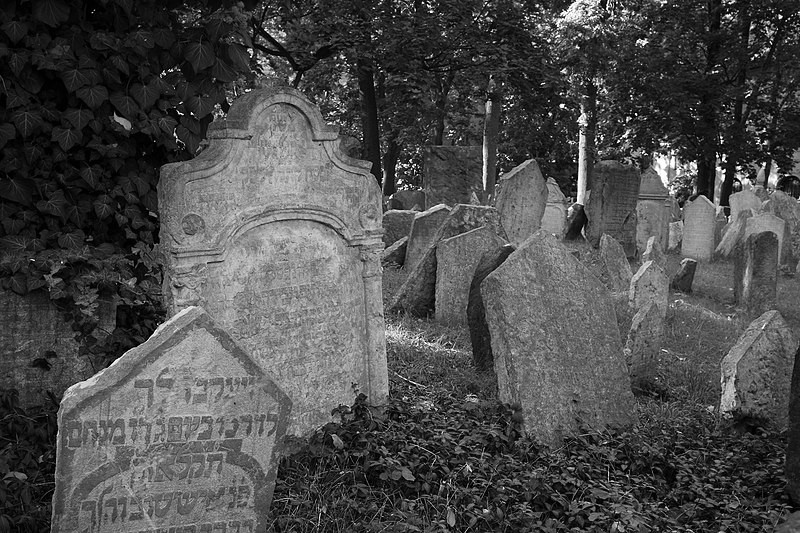Aprendí esta máxima de niño, antes quizás de Mi Primera Comunión. Murió mi hermano Manolo y no lloré; murió mi padre, y no lloré; murió mi madre y no lloré. Ahora tengo ochenta y un años. Recordé que lo había leído en algún sesudo estudio literario:”Todos somos Gregorio”, concluía el autor.
“¡Hay un horrible bicho en el cuarto de baño, por favor mátalo!”, me gritaron en casa. El bicho estaba tumbado boca arriba y movía sus extremidades enérgicamente como si siguiera una tabla de gimnasia. Lo cogí con cuidado y lo deposité en un discreto rincón de la terraza.
Recordé a Gregorio. ¿No podría ser que aquel ser que agitaba sus patas al aire fuera descendiente de Gregorio?. Hice cálculos: la vida de un ser humano hoy día es de unos ochenta años. Desde que Gregorio murió había pasado algo más de un siglo, calculé tres generaciones.
María, vecina mía desde 1986, siempre espiaba y escudriñaba desde su balcón. A veces me interrogaba, me preguntaba que dónde iba o que quién era la chica que me acompañaba, o que por qué iba vestido de negro, o de dónde había sacado el limonero de mi terraza, o por qué tendía mi ropa en la terraza y no en la azotea común.
Yo educadamente contestaba siempre a sus preguntas. Iba a Nueva York a correr una maratón. La chica esa es Julia, mi hermana gemela que se ha hecho ya varias operaciones de estética para ocultar nuestro parentesco. Yo estaba vestido de negro por los 127.003 ancestros míos que habían muerto en una fecha como la de hoy. El limonero de mi terraza había crecido por generación espontánea, en la axila de una antigua novia mía, llamada Segismunda. Tendía mi ropa en mi terraza privada para proteger a los vecinos de una enfermedad incurable que mi familia venía padeciendo desde el Siglo XVIII, etc.
Repentinamente mi metiche vecina desapareció del balcón como por encanto. Su hija Mari Carmen me explicó la situación. María estaba enferma, muy enferma, y la habían ingresado en un hospital.
Imaginé lo peor, fui a la terraza y comprobé que el descendiente de Gregorio aún movía sus extremidades. Aún estaba vivo y me pregunté si no debía de ingresarlo de urgencias en un hospital. Llamé a varios hospitales, los llamé a todos, uno tras otro. Ninguno tenía cama para Gregorio y además no tenían el equipo adecuado para atenderlo; mascarillas de oxígeno de su tamaño y cosas similares. Protesté, me constaba que habían ingresado a María. ¿Era Gregorio menos que María?.
Los del hospital aducían que esa no era la cuestión. La cuestión era más bien que no tenían el instrumental para atender a Gregorio, como tampoco lo tendrían para atender a alguien que pesara trescientas veces más que María. No era por tanto una cuestión de ser más o menos.
—La cuestión es que todos somos Gregorio —dije.
—Sí, y todos somos María —dijo la última voz.
Después acudí una vez más para ver a Gregorio. Aun se movía, sobretodo novia las antenas, aunque más lentamente que antes.
—No te preocupes —dije, le dije—, no pasa nada.
Tomé de internet varios datos sobre la otra mitad de Gregorio. Los fósiles encontrados atestiguan que han existido por más de trescientos millones de años, siendo una de las especies más exitosas para la supervivencia, capaces incluso de sobrevivir a un ataque nuclear. En otras palabras, la estirpe de Gregorio era prácticamente eterna por detrás, y presumiblemente por delante. Pasaron dos semanas en las que nada pasó. Luego un vecino de La Norte, mi pub local, me lo anunció.
—¡María ha muerto!
—¿Qué dices?, ¿cómo lo sabes?
—Aquí está, viene su esquela en el periódico, es lo primero que leo: “María López Trujillo…”
Corrí a casa temiéndome lo peor: que el último descendiente de Gregorio Samsa había muerto. Subí las escaleras llorando.


Old Jewish Cemetery in Josefov, Prague. © Jorge Royan
Do Men Not Cry?
I learned this maxim as a child, perhaps even before my First Communion. My brother Manolo died, and I didn’t cry; my father died, and I didn’t cry; my mother died, and I didn’t cry. Now I’m eighty-one years old. I remembered reading it in some scholarly literary study: ‘We are all Gregorio,’ the author concluded.
‘There’s a horrible bug in the bathroom, please kill it!’ they shouted at me at home. The bug was lying on its back, moving its limbs energetically as if following a gymnastics routine. I carefully picked it up and placed it in a discreet corner of the terrace.
I remembered Gregorio. Couldn’t it be that the being waving its legs in the air was a descendant of Gregorio? I did the math: a human’s life today is about eighty years. Since Gregorio died, a little over a century had passed. I calculated three generations.
María, my neighbor since 1986, always spied and scrutinized from her balcony. Sometimes she interrogated me, asked me where I was going or who the girl accompanying me was, or why I was dressed in black, or where I got the lemon tree on my terrace, or why I hung my clothes on the terrace instead of the common rooftop.
I politely answered her questions. I was going to New York to run a marathon. That girl is Julia, my twin sister, who has undergone several cosmetic surgeries to hide our relationship. I was dressed in black for the 127,003 ancestors of mine who died on a day like today. The lemon tree on my terrace grew spontaneously in the armpit of an old girlfriend named Segismunda. I hung my clothes on my private terrace to protect the neighbors from an incurable disease my family had been suffering from since the 18th century, etc.
Suddenly my nosy neighbor disappeared from the balcony as if by magic. Her daughter Mari Carmen explained the situation to me. María was sick, very sick, and had been admitted to a hospital.
I imagined the worst, went to the terrace, and checked that Gregorio’s descendant was still moving its limbs. It was still alive, and I wondered if I should urgently admit it to a hospital. I called several hospitals, I called them all, one after another. None had a bed for Gregorio, and they also lacked the proper equipment to attend to him; oxygen masks his size and similar things. I protested, I knew they had admitted María. Was Gregorio less than María?
The hospital staff argued that this was not the issue. The issue was more that they didn’t have the instruments to attend to Gregorio, just as they wouldn’t have them for someone weighing three hundred times more than María. It wasn’t a matter of more or less.
—The issue is that we are all Gregorio —I said.
—Yes, and we are all María —said the last voice.
Then I went one more time to see Gregorio. It still moved, especially its antennas, although more slowly than before.
—Don’t worry —I said, I told him—, everything is fine.
I gathered some information from the internet about the other half of Gregorio. Fossils found attest that they have existed for over three hundred million years, being one of the most successful species for survival, capable even of surviving a nuclear attack. In other words, Gregorio’s lineage was practically eternal behind and presumably ahead. Two weeks passed with nothing happening. Then a neighbor from La Norte, my local pub, informed me.
—Maria has died!
—What are you saying? How do you know?
—Here it is, her obituary is in the newspaper, it’s the first thing I read: ‘Maria Lopez Trujillo…’
I ran home fearing the worst: that the last descendant of Gregorio Samsa had died. I climbed the stairs crying.
El dicho de: ‘los hombres no lloran’, es algo en mi humilde opinión, que jamás debería haber existido. Las personas (hombres, o mujeres), reflejan su sensibilidad ante temas tristes llorando. Es algo necesario para que no queden secuelas pendientes. ¡¡¡Y algo tan bonitooo!!! refleja ‘ser humanos’… emotivos, frágiles, sensibles y sentimentales. ¡¡¡preciosos sentimientos!!!
LikeLiked by 1 person
Justamente, máximas de una època …Gracias por comentar. Saludo
LikeLike